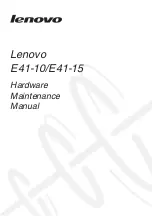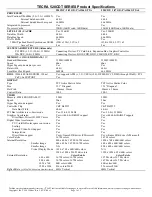
Increased gray background
shading/printer wear
Too heavy
Use lighter paper; use the rear
output slot.
Excessive curl problems with
feeding
Too moist, wrong grain direction,
or short-grain construction
• Use the rear output slot.
• Use long-grain paper.
Jamming, damage to printer
Cutouts or perforations
Do not use paper with cutouts or
perforations.
Problems with feeding
Ragged edges
Use good quality paper.
NOTE:
Do not use letterhead paper printed with low-temperature inks, such as those used in some
types of thermography.
NOTE:
Do not use raised or embossed letterhead.
NOTE:
The printer uses heat and pressure to fuse toner to the paper. Insure that any colored
paper or preprinted forms use inks that are compatible with this fusing temperature (200
°
C or
392
°
F for 0.1 second).
Paper Specifications
Category
Specifications
Acid Content
5.5~8.0 pH
Caliper
0.094~0.18 mm (3.0~7.0 mils)
Curl in Ream
Flat within 0.02 in (5 mm)
Cut Edge Conditions
Cut with sharp blades with no visible fray.
Fusing Compatibility
Must not scorch, melt, offset, or release hazardous emissions when
heated to 200
°
C (392
°
F) for 0.1 second.
Grain
Long Grain
Moisture Content
4%~6% by weight
Smoothness
100~250 Sheffield
Paper Output Capacity
Output Location
Capacity
Paper Output Tray (Face Down)
100 sheets of 75 g/m²
bond (20 lb) paper


































